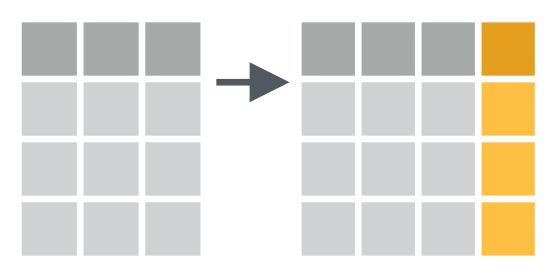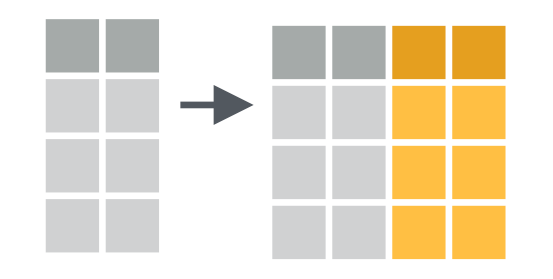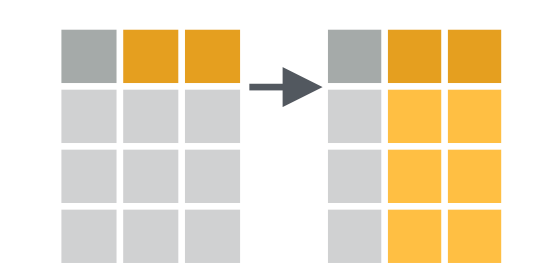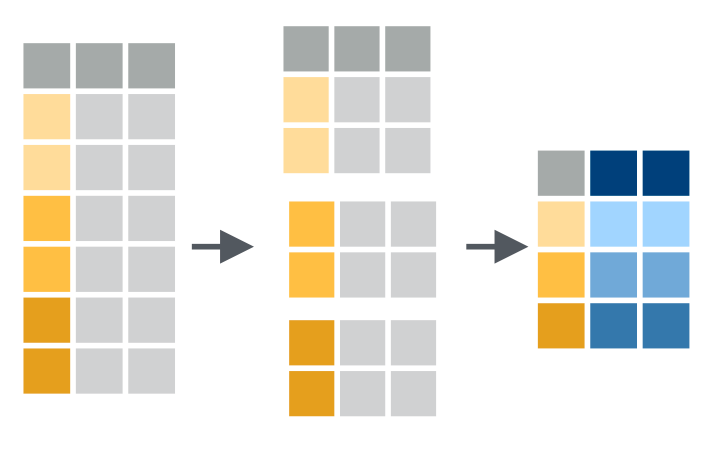Data wrangling & manipulation in R - workshop site
Day 3 notes: Extending your data with mutate(), summarise() & friends
Ruan van Mazijk
An example
(To motivate the next set of dplyr-verbs I want to cover.)
data %>%
gather(key = veg_type, value = fix) %>%
separate(fix, into = c("lon", "lat")) %>%
select(veg_type, lon, lat, soil, plant_height) %>%
filter(plant_height %>% between(0.5, 10),
veg_type %in% c("fynbos",
"strandveld",
"renosterveld")) %>%
???()
How do we get summary statistics for each vegetation type? With these verbs:
mutate() # operates on columns
group_by() # operates on rows
summarise() # operates on rows (in groups) & columns
Examples: mutate() & co.
data %>%
mutate(...)
data %>%
mutate(BMI = height / weight)
data %>%
mutate(BMI = height / weight,
BMI_std = scale(BMI))

data %>%
mutate_all(.funs, ...)
data %>%
mutate_all(scale)
data %>%
mutate_all(list(log, log1p))

data %>%
mutate_if(.predicate, .funs)
data %>%
mutate_if(is.numeric, scale)
data %>%
mutate_if(is.numeric, list(log, log1p))

Example: group_by() & summarise()
data %>%
group_by(veg_type) %>%
summarise(mean_plant_height = mean(plant_height),
st_plant_height = sd(plant_height))
data %>%
group_by(veg_type) %>%
summarise_if(is.numeric, mean)
data %>%
group_by(veg_type) %>%
summarise_if(is.numeric, mean, na.rm = TRUE)
data %>%
group_by(veg_type) %>%
summarise_if(is.numeric, list(mean, sd))

Diagrams illustrating gather(), spread(), separate() and unite() are taken from RStudio cheatsheets (CC BY SA RStudio)